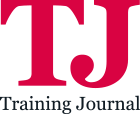Pressure at work is not the enemy, but burnout is. Kimberley Rowbottom explores why businesses need to rethink outdated stress strategies and build smarter pressure management through learning. It’s time to equip people with the tools to thrive, not just survive, in today’s high-pressure world of hybrid work and uncertainty
Navigating the post-pandemic workplace, it’s become clear that the line between healthy pressure and harmful stress has become even more all-encompassing. Employees face pressure from multiple sources – from hybrid working challenges to economic uncertainty, and shifting job expectations. And pressure is causing a bigger problem – productivity loss.
L&D is the bridge between understanding pressure and applying that understanding in real time
Scarily, work-related stress is costing UK employers £28bn a year in lost productivity. Yet, many businesses continue to rely on outdated stress management techniques. Think mindfulness apps, lunch-and-learns, and reactive policies that, while well-intentioned, are often feel token. What’s needed is a fundamental shift, from managing pressure after it occurs to preventing burnout before it starts. That requires a deeper understanding of the science of pressure and a commitment to embedding that understanding into workplace culture through strategic learning and development.
Rethinking stress: Why pressure isn’t always the enemy
Much of traditional stress management believes that reducing pressure is always the goal. But research into optimal performance suggests otherwise. Pressure can actually enhance focus, creativity and productivity. A problem only arises when that pressure becomes unsupported and a long-term workplace factor. Current business strategies often treat stress as a uniform experience, failing to recognise individual pressure thresholds or the distinct challenges faced across roles and responsibilities.
Businesses need to change this approach, proactively equipping people to stay in the sweet spot of productive pressure without tipping into burnout. The narrative needs to shift from: “How do we reduce stress?” to “How do we help people manage pressure in a sustainable way?”
This is where science-backed frameworks come into play. Modern performance models emphasise the concept of the “pressure-performance curve” – a psychological principle showing that too little pressure leads to disengagement, while too much leads to burnout. The goal isn’t to eliminate pressure but to help employees find and maintain their optimal zone.
Turning insight into action: The role of L&D in pressure management
So, turning this theory into practice. Through Learning and Development. L&D is the bridge between understanding pressure and applying that understanding in real time.
Training programmes need to equip both managers and teams with practical skills to manage pressure effectively. Employees need tools to self-assess and self-regulate, enabling them to adapt before reaching breaking point. Leaders must be trained to recognise the early signs of pressure imbalance in their teams and respond with calibrated support. This includes leadership programmes that focus on emotional intelligence, resilience training, and scenario-based learning that mirrors real workplace pressures.
Real-life simulation training tools give leaders a stronger chance at identifying when team members are heading into overwhelm. Likewise, employees increase their ability to become more self-aware and confident in managing competing demands. Once these two pieces of the jigsaw are put together, organisations can start to see a shift – from reactive responses to a culture that creates a genuine, sustainable performance.
Rewriting the rules of resilience: How businesses can lead the shift
Burnout is a result of outdated thinking and under-equipped workplaces. By redefining how businesses approach pressure, grounding it in science and delivering it through learning, leaders can turn a £28bn productivity crisis into an opportunity for meaningful, measurable change.
The modern workplace has outgrown surface-level solutions and can no longer work in an environment where short-term fixes can tackle long-term strain. Stress management needs to be reimagined not as a set of policies but as a cultural shift, rooted in education, empathy and empowerment.
The future of work is not pressure-free – but with the right strategies, it can be burnout-free.
Kimberley Rowbottom is HR Director at Pluxee UK




